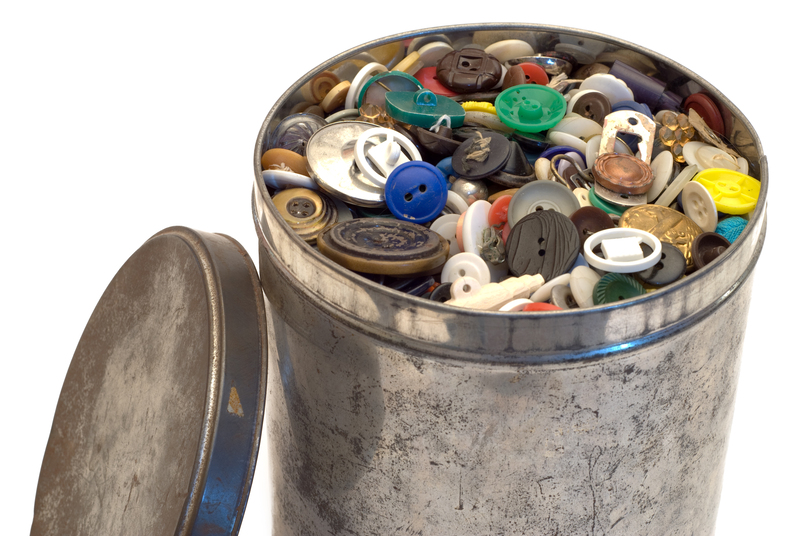How to Protect Wildlife by Properly Disposing of PPE Waste
The surge in personal protective equipment (PPE) usage during global health crises has significantly altered the landscape of waste management. While PPE items like masks, gloves, and face shields protect human lives, their improper disposal can have dire consequences for wildlife and ecosystems. In this comprehensive guide, we explore how to protect wildlife by properly disposing of PPE waste, why it matters, and the actionable steps you can take to minimize your environmental footprint.
Understanding the Impact of PPE Waste on Wildlife
The widespread use of single-use PPE during pandemics has led to an alarming increase in plastic pollution. Discarded masks and gloves find their way into natural habitats, oceans, rivers, forests, and urban environments. Wildlife often mistakes PPE debris for food or become entangled in it, leading to injuries, suffocation, starvation, and even death. Proper PPE waste disposal is crucial for both protecting biodiversity and ensuring ecological balance.
Common Types of PPE Contributing to Environmental Threats
- Disposable face masks (surgical and cloth masks)
- Rubber or latex gloves
- Protective gowns and body covers
- Face shields and plastic visors
- Shoe covers

How PPE Waste Harms Wildlife
- Entanglement: Animals, especially birds and marine creatures, get tangled in mask loops and gloves, restricting movement or causing fatal injuries.
- Ingestion: Small pieces of plastic from torn masks and gloves are often mistaken for food, leading to internal blockages and starvation.
- Pollution of Habitats: Accumulation of PPE waste contaminates soil, water, and air, disrupting fragile ecosystems and food chains.
- Toxic Leachates: PPE items often release chemicals as they break down, poisoning soil and water resources used by both wildlife and humans.
Case Studies: Real-World Examples of PPE Waste Harm
Numerous reports surfaced globally of seabirds with elastic mask straps wrapped around their necks, and marine mammals ingesting latex gloves, which block their digestive tracts. Wild animals in urban parks and forests have also been seen carrying fragments of discarded masks. These incidents underline the urgent need to adopt safer disposal practices to preserve wildlife health.
Steps to Protect Wildlife: How to Properly Dispose of PPE Waste
1. Choose Reusable PPE Where Possible
- Switch to reusable fabric masks that can be washed and sanitized, reducing single-use waste.
- Opt for washable gloves for activities that don't require medical-grade protection.
Reusable PPE helps decrease the overall amount of disposable plastic entering our ecosystems. Not only does this approach protect wildlife by lessening waste, but it also supports sustainable consumption habits.
2. Proper Disposal of Single-Use PPE
When single-use PPE is necessary, dispose of it responsibly using these steps:
- Do not litter: Never discard masks, gloves, or shields in public places, parks, or nature.
- Use sealed garbage bins: Place used PPE in a sealed or lined trash bin to prevent wind or animals from scattering debris.
- Cut the straps or ear loops: Before throwing away masks, snip the straps to reduce the risk of animal entanglement.
- Bag PPE separately: If possible, collect PPE waste in a dedicated bag. Double bagging is advised for any potentially contaminated items.
- Never flush PPE: Flushing masks or gloves clogs sewers and releases microplastics into waterways.
3. Support Dedicated PPE Recycling Programs
- Find local programs: Some communities and companies collect used PPE for recycling. Check if special drop-off points or mail-back initiatives exist in your area.
- Ask your employer or school: Encourage workplaces and schools to implement PPE recycling options and educate stakeholders about proper waste management.
Specialized recycling helps keep hazardous waste out of landfills and natural habitats, providing a more sustainable end-of-life for PPE products.
4. Participate in Community Clean-Ups
Volunteer or organize community clean-up events focused on collecting improperly discarded PPE in parks, beaches, and neighborhoods. These initiatives make a tangible difference by removing waste that could otherwise harm animals and pollute environments.
5. Educate Others About Protective Waste Disposal
- Raise awareness among friends, family, and social groups on how PPE waste endangers wildlife and the importance of proper disposal.
- Use social media: Share infographics, articles, and tips using hashtags like #ProtectWildlife #StopPPEPollution.
- Engage local leaders: Advocate for public signage, more bins, and community education campaigns on safe PPE disposal.
Reducing Your PPE Environmental Footprint
Adopt Eco-Friendly PPE Choices
- Opt for biodegradable masks and gloves made from materials that break down naturally, minimizing lasting environmental impact.
- Research plant-based PPE options, which are becoming more available as producers respond to environmental concerns.
Change Personal Habits
- Purchase only what you need: Avoid stockpiling PPE that may degrade before use.
- Carry reusable alternatives: Store clean, reusable face masks and gloves for daily use where appropriate.
- Travel with a personal waste bag: Use it to temporarily store soiled PPE until you can dispose of it securely.
Advocate for Systemic Change
- Support legislation that requires producers and retailers to take responsibility for PPE waste management.
- Encourage innovation: Demand that brands and manufacturers invest in sustainable PPE product design and recycling schemes.
The Role of Businesses and Institutions
Workplace PPE Waste Management
- Install clearly labeled PPE disposal bins at entrances, exits, and high-traffic areas.
- Educate employees about the environmental risks of PPE litter--offer regular training or reminders.
- Collaborate with waste management companies experienced in handling hazardous or contaminated materials.
- Monitor disposal practices: Periodically review waste outputs to identify issues and make improvements.
Healthcare Facilities and PPE Waste
Hospitals, clinics, and care centers generate large quantities of PPE waste. Adherence to biohazard waste protocols is vital.
- Segregate PPE waste: Use color-coded bins to separate PPE from general and medical waste.
- Follow incineration or sterilization guidelines to prevent contamination and unintentional wildlife exposure.
Innovative Solutions for Managing PPE Waste
Emerging Technologies in PPE Recycling
- Chemical recycling: Breaks down plastic in PPE into reusable raw materials.
- Mechanical recycling: Cleans and reprocesses PPE plastics for use in other products, like construction materials.
Alternative Materials
Research is ongoing to develop masks, gloves, and other protective equipment from starch, cellulose, bamboo, and other renewable sources. These reduce the burden of long-lasting plastic pollution and increase compostability.
Government Policies & International Efforts
Regulations and Guidelines
- Many local governments enacted rules regarding PPE disposal during health emergencies. These often require PPE to be bagged and placed in landfill-designated bins, not recycling.
- Enforcement of littering laws has increased, with fines targeting improper PPE discarding.
International Initiatives
Organizations like the United Nations Environment Programme (UNEP) and the World Wildlife Fund (WWF) have launched campaigns to reduce plastic waste from PPE, promote recycling, and support local communities in implementing safer waste practices.

Key Takeaways: Protecting Wildlife Through Proper PPE Waste Disposal
- Choose reusable or biodegradable PPE whenever possible to minimize waste.
- Dispose of single-use PPE responsibly: cut straps, use sealed bins, and avoid flushing or littering.
- Support or start PPE recycling efforts in your community.
- Raise awareness about the risks of PPE pollution for wildlife.
- Advocate for systemic changes in manufacturing, waste management, and legislation.
Conclusion: Make a Difference Every Day
Protecting wildlife isn't just about grand conservation projects--it's also about everyday choices. By practicing proper PPE disposal, choosing sustainable alternatives, and educating others, each person can help safeguard animals and ecosystems from the growing threat of plastic pollution. Together, our actions ensure that masks, gloves, and other protective gear serve to shield humanity without endangering the natural world.
Remember: Simple steps taken today can prevent harm to countless animals and preserve the beauty and balance of our planet for generations to come. Choose wisely. Dispose responsibly. Protect wildlife by managing PPE waste with care.